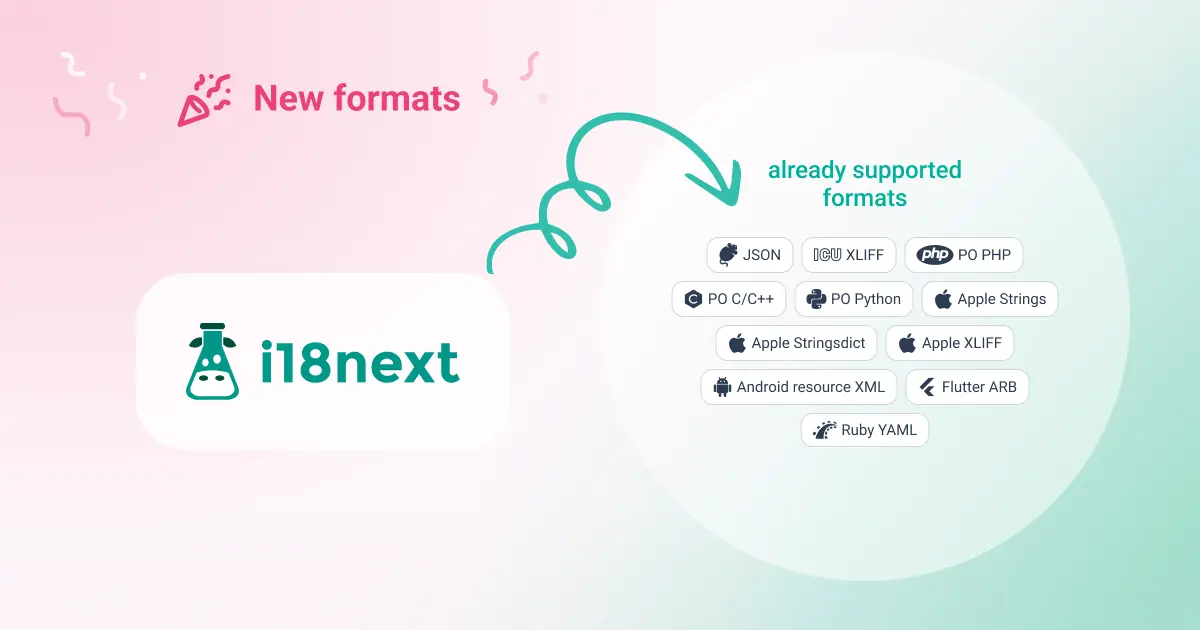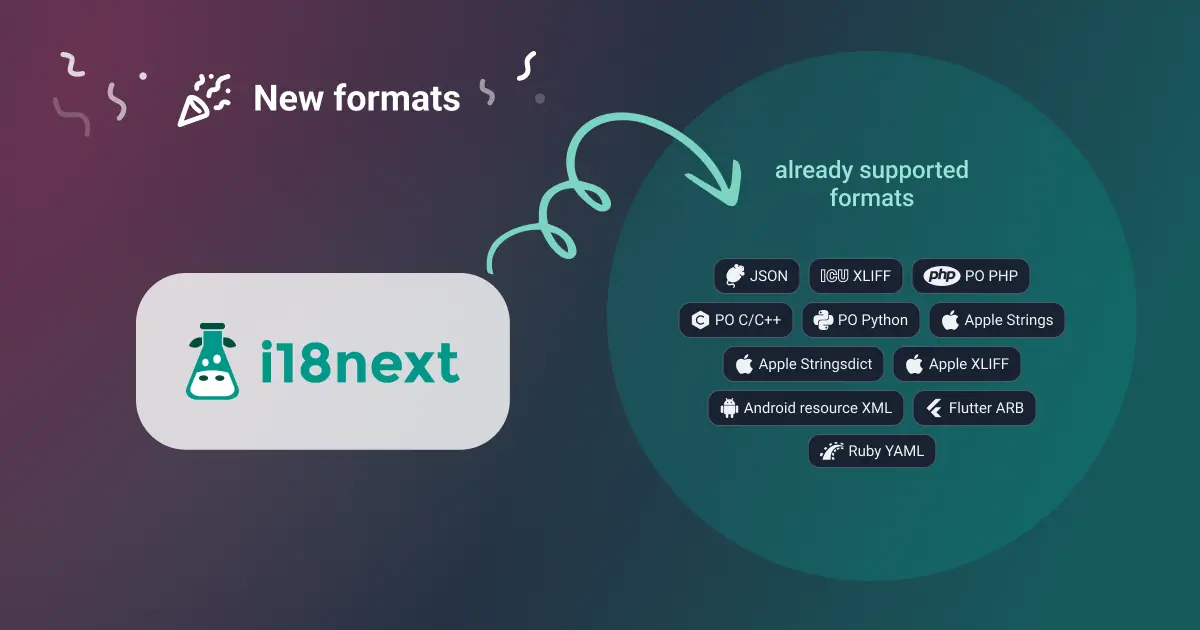Tolgee now Supports i18next Format


We are excited to announce that Tolgee now supports the i18next format, a widely-used solution for handling translations in JavaScript-based localization projects.


We are excited to announce that Tolgee now supports the i18next format, a widely-used solution for handling translations in JavaScript-based localization projects.
So you develop an app in React and you want many users to use it, right? To make your app usable for users in foreign countries, you have to translate your App to their languages. 🇬🇧 🇨🇳 🇮🇹 🇪🇸 🇫🇷
In this article, I am going to show you, how to integrate i18next and Tolgee into your project and how easy and fast you can translate a React app using these tools.
Tolgee has also its native integrations. Which are a bit easier to set up, so if you're not used to i18next, maybe it would be easier for you to start with those.

The i18next library is one of the most popular choices for formatting translations in React applications. We decided, that we want to improve the experience by offering an easy integration with Tolgee. Localization is now uniquely accessible as your translations can be managed through opensource platform, without wasting precious Dev time.

Some time ago I've came across an article about inserting secret text into regular messages using invisible zero-width unicode characters. Now during my work on localization SDKs, I've found quite interesting use case for it.